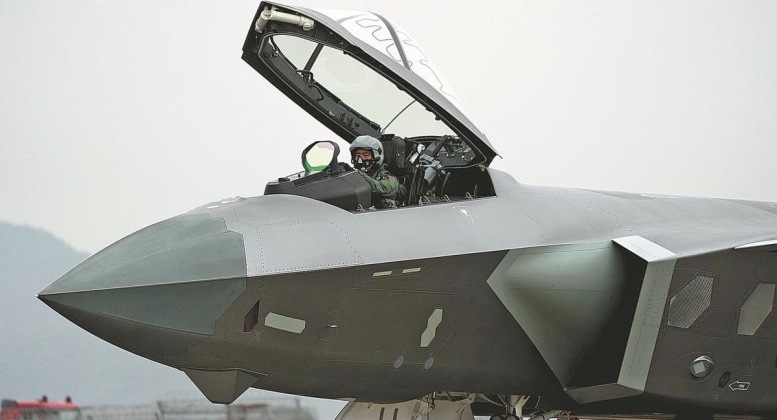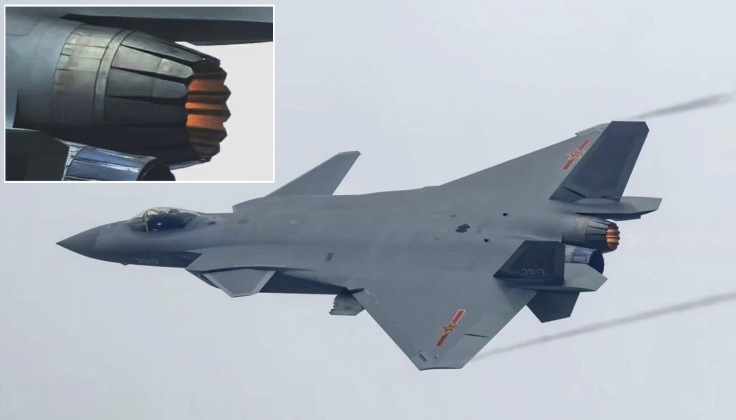News
Tenth Chinese Air Brigade Receives J-20 Next Generation Fighters: What a New Base Near Hainan Island Signifies
The Chinese People’s Liberation Army (PLA) Air Force 131st Air Brigade has reportedly begun to operate J-20A fighter aircraft, making it the third unit over the last 12 months to transition to the new fighter class after the 8th Air Brigade in Northeast China in August 2022, and the 55th Air Brigade in March 2023 based at a central point on the country’s east coast. The new unit is the tenth in the Air Force to receive the J-20, as China continues to rapidly expand its fifth generation fighter fleet which is by far the largest outside the United States. Over 200 J-20s are estimated to currently be in service, with production rates far exceeding that of any other twin engine fighter class in the world at over 40 airframes per year at a conservative estimate – and well over 50 according to many assessments. The J-20 is one of just two fighters of its generation in production and fielded at squadron level strength alongside the American F-35, with both seeing deployments to Northeast Asia expand rapidly and having seen their first encounter confirmed in March 2022 over the East China Sea. Unlike the F-35, which was developed under the Joint Strike Fighter program as a single engine relatively light and low cost aircraft primarily for air to ground missions, the J-20 is a twin engine heavyweight air superiority fighter optimised for air to air combat with a much higher endurance and which carries much larger sensors and more armaments.

The 131st Air Brigade is expected to be one of the last units to receive newly produced J-20A fighters, with this class of aircraft having entered production in 2019 and begun deliveries to the Air Force two years later with multiple improvements including enhanced stealth capabilities and integration of indigenous WS-10C engines. The WS-10C allows fighters to fly supersonically without afterburners – or ‘supercruise’ – which is a key requirement for fifth generation fighters which the F-35 notably cannot achieve. New production models of the J-20, however, are expected to be integrating new WS-15 engines which were reported in April to have entered serial production and are likely to begin to enter service in early 2025. The WS-15 is expected to revolutionise the J-20’s capabilities, providing a much higher endurance, an improved flight performance in all areas, much lower maintenance needs and operational costs, and greater energy for new generations of sensors or directed energy weapons. Development of a new engine for the American F-35 is currently under serious consideration, both to partially bridge the massive discrepancy in manoeuvrability and endurance the fighter faces against the J-20, and because of serious performance issues with its current engine which has been a key cause of poor availability rates and lacks the cooling capacities needed to properly power the aircraft. Issues with the F-35’s engine have already cost the Pentagon approximately $38 billion.

The location of the Air Force’s 131st Air Brigade near the southernmost point on the Chinese mainland is notably an optimal location not only for the defence of key southern cities such as Shanghai, Hangzhou, Guangzhou and Shenzhen, but also for defending key naval facilities located very nearby on Hainan Island. Most notable among these is Longpo Naval Base which serves as the leading hub of China’s nuclear submarine operations and has been very heavily fortified accordingly. The base is expected to be a leading target for Western forces in the event of a war in the Pacific, in particular for stealth bombers carrying penetrative gravity bombs such as the GBU-57 which is among the few weapons capable of penetrating through some of the better fortified parts of the base. Deploying a J-20 brigade nearby, which train intensely to tackle stealth targets and are by far the most dangerous aircraft the U.S. and its allies could face in terms of air superiority capabilities, thus provides an important degree of added protection. J-20s under the 131st Air Brigade notably replaced J-10C fighters which were based there since 2016, with the brigade having been among the very first to receive the new J-10 class and transitioning to them from the older J-10A. It represents the fourth unit to transition from the lightweight J-10 to the J-20, which is an aircraft over twice the size with a much larger logistical footprint, but also with a far greater combat potential despite the J-10C already being considered among the Air Force’s foremost fighters.












